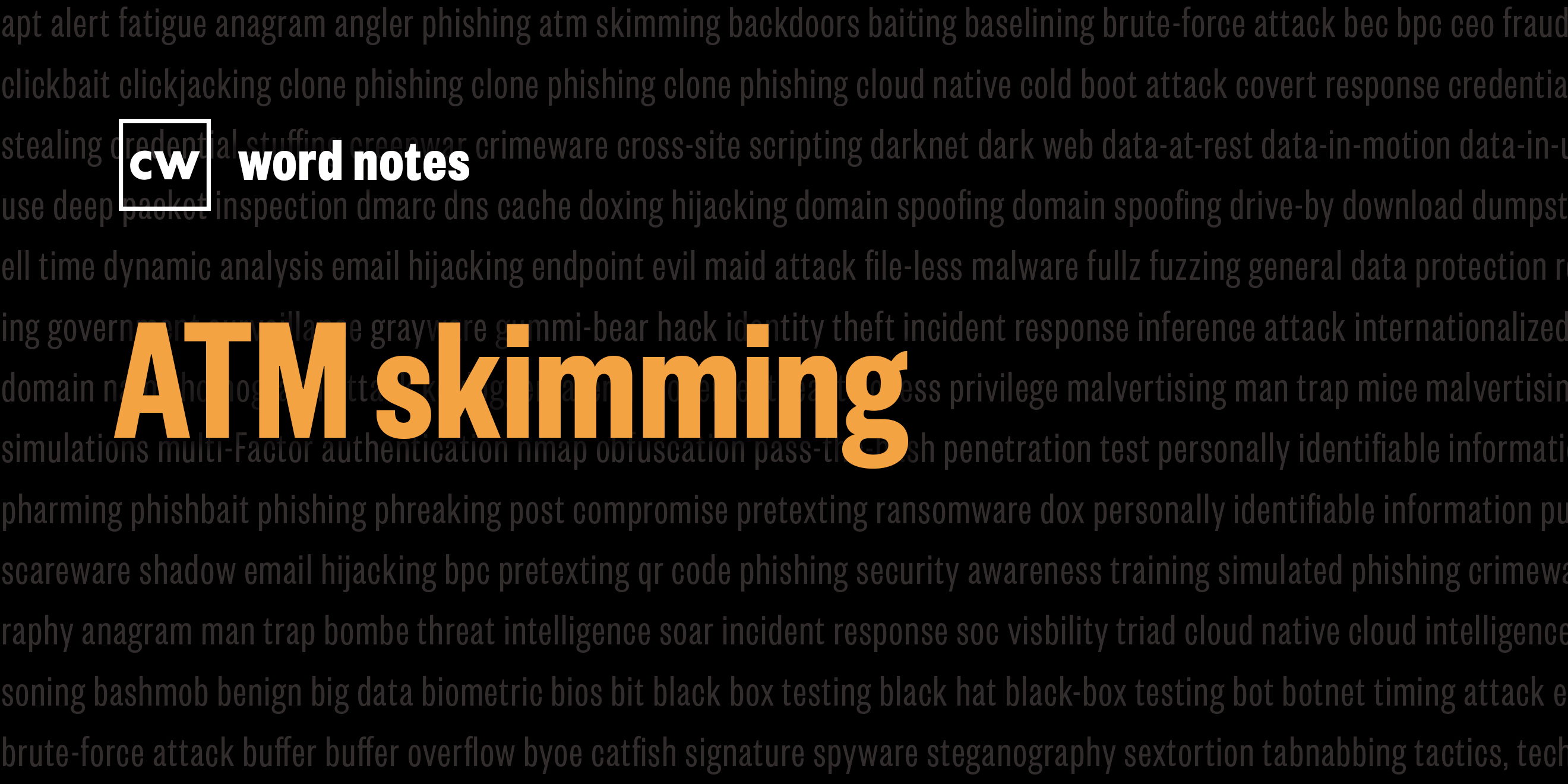
ATM skimming (noun)
Rick Howard: The word is: ATM skimming.
Rick Howard: Spelled: A is an automatic, T as in teller, M as in machine, and skimming for theft.
Rick Howard: Definition: The process of stealing ATM customer credentials by means of physically and covertly installing one or more devices on a public ATM machine.
Rick Howard: Example sentence: In the last two decades, ATM skimmer tools have gone from an urban myth to a widely complex, ever-evolving suite of technologies that has potential to be the worst nightmare of anyone with a bank account.
Rick Howard: Origin and context: By secretly placing one or more devices on public ATM machines, criminals steal PIN numbers and credit card numbers from unsuspecting victims. They can then use those credentials to conduct online transactions or withdraw money from other ATM machines by impersonating the victim. According to Gizmodo, the first ATM skimmers started appearing in 2002. Prior to that, they were largely an urban myth. Lawyers and law enforcement thought they were possible, but unlikely. In 2003, a single deli in New York City lost over two hundred thousand dollars in one day. Badly camouflaged scammers started appearing in 2008 and 2009. But from 2012 until today, a cold war between criminals and device makers has been in full swing as device makers build anti-fraud devices and criminals find ways around them. Criminals can buy skimming technology online or build the devices themselves. Generally, ATM skimmer tech is up to three components: 1. A skimmer, a device designed to naturally fit on top of the actual ATM card reader that can record magnetic strip information, 2. A keypad overlay device designed to naturally thin on top of the actual ATM keypad device that can record PIN numbers, and 3. A camera usually hidden above the keypad that can also record pin numbers.
Rick Howard: Nerd reference: The Nilson Report is an independent financial newsletter that has been in print for 50 years and provides credit, debit and prepaid card issuer, acquirer and technology vendor statistics to its subscribers. For 2018, they reported that their customers worldwide lost a staggering twenty eight billion dollars. That's billion with a "B" in debit and credit card fraud associated with ATMs, a 16% increase from the previous year, and that 39% of that sum came from the United States.

